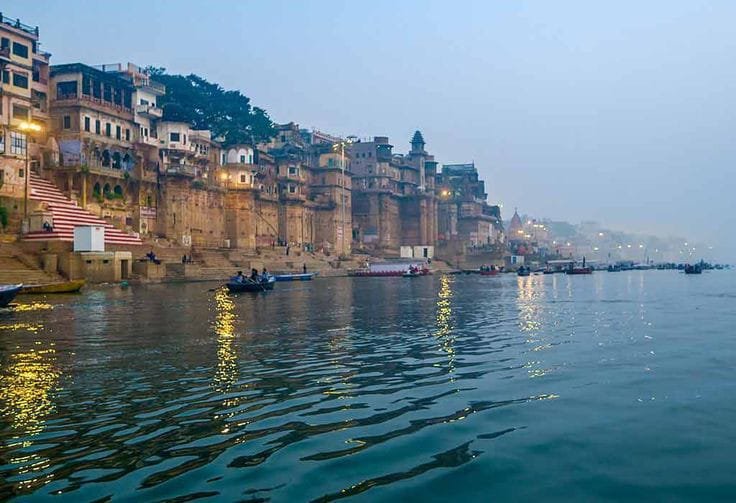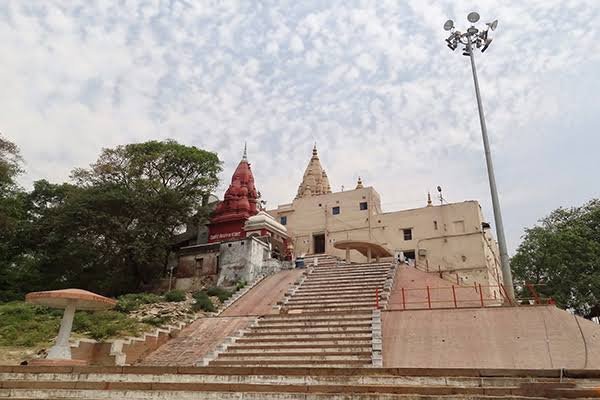Introduction: The Eternal River Ganga and Its Role in Indian Culture
The Ganges River, commonly known as Ganga, holds a profound place in the hearts of Indians. Flowing through the vast stretches of northern India, the Ganges is more than just a river—it is a symbol of life, purity, and spirituality. Revered as a goddess, Ganga is believed to cleanse the sins of those who bathe in her waters. The river not only sustains millions of people who depend on it for agriculture, fishing, and other livelihoods, but it also serves as a site for countless religious rituals and ceremonies.

However, over the past decades, the Ganges has faced severe pollution, primarily due to unchecked industrial waste, sewage disposal, and plastic pollution. The very water considered holy by millions has become polluted to a critical level in many regions. Recognizing the urgent need to protect the sanctity and ecological balance of this revered river, the Government of India launched the Namami Gange Mission in 2014, a flagship initiative aimed at cleaning and rejuvenating the river.
The Significance of Adi Keshav Ghat in Varanasi
Varanasi, often called the spiritual capital of India, is a city of ghats. With more than 80 ghats lining the banks of the Ganges, each ghat holds a unique position in the religious and cultural history of the city. Among them, Adi Keshav Ghat is one of the most ancient and significant. Located at the confluence of the Varuna and Ganges rivers, Adi Keshav Ghat is considered a sacred spot where Lord Vishnu, in his Adi Keshav form, is believed to have made his presence.

The ghat plays a pivotal role in the religious life of Varanasi’s residents, being a favored spot for pilgrims to bathe and perform rituals. But it is during the annual Ramleela performance—the dramatization of the epic Ramayana—that Adi Keshav Ghat becomes the center of cultural and spiritual activities. This event attracts thousands of devotees and tourists from across the region, who come to witness the enactment of Lord Rama’s life and victories.
In anticipation of the Ramleela performance, ensuring the cleanliness of the ghat becomes paramount. Given the high footfall during the event, the local authorities, in collaboration with the Namami Gange Mission, launched an extensive cleanliness drive to prepare the ghat for the event.
Namami Gange Mission: A Comprehensive River Rejuvenation Initiative
The Namami Gange Mission is a multi-faceted initiative aimed at rejuvenating the Ganges River, addressing pollution at its sources, and promoting sustainable practices to maintain the river’s cleanliness. This mission is not limited to just cleaning the river; it encompasses broader goals of biodiversity conservation, afforestation, wastewater management, and fostering community participation in safeguarding the Ganges.

One of the main components of this initiative is the active involvement of local communities in maintaining the cleanliness of ghats, riverbanks, and nearby areas. This was evident in the cleanliness drive undertaken at Adi Keshav Ghat in Varanasi.
The Adi Keshav Ghat Cleanliness Campaign: Mobilizing the Community
On Wednesday, a significant cleanliness drive was conducted at Adi Keshav Ghat, organized by the Ganga Vichar Manch, Varanasi unit, under the Namami Gange Mission. The campaign was timed to prepare the ghat for the grand Ramleela performance set to take place the following day. Spearheaded by Shivam Agrahari, the metropolitan coordinator of Namami Gange, the cleaning operation involved both municipal sanitation workers and volunteers from the local community.

In total, the cleanliness campaign was a collaborative effort that showcased how different stakeholders—citizens, municipal authorities, and environmental activists—can come together to achieve a common goal. The campaign’s primary focus was to clear the Ramleela site of any accumulated waste, debris, and litter, ensuring that it was pristine and ready for the influx of spectators.
Key Participants and Their Roles
The Namami Gange Mission thrives on the active participation of citizens, and this campaign was no exception. The cleanliness drive at Adi Keshav Ghat saw a broad spectrum of participants, each contributing their time and effort to the mission. Volunteers like Shivam Agrahari, Jai Vishwakarma, Shivangi Pandey, Kanhaiya Nishad, Mumtaz, Manoj, Sonu, and Rajkumar played a pivotal role in making this campaign a success.
With brooms and other cleaning tools in hand, these volunteers, alongside municipal workers, meticulously cleaned the ghat and surrounding areas. The volunteers focused on sweeping, collecting trash, and clearing waste from the riverbanks to ensure the environment was clean for the upcoming cultural event. Their contribution not only ensured a clean ghat but also helped in spreading awareness about the importance of cleanliness in maintaining the sanctity of the Ganges.
Preparations for the Ramleela: A Major Cultural and Religious Event
The Ramleela at Adi Keshav Ghat is more than just a theatrical performance—it is a celebration of faith, culture, and tradition. This annual event, which reenacts significant episodes from the Ramayana, such as Sursa Milan, Lanka Dahan, and Setu Bandh, draws thousands of spectators, both locals and tourists. The Ramleela is a highly anticipated event, and its staging at Adi Keshav Ghat adds to the spiritual aura of the ghat itself.

Given the high volume of people who visit the ghat during the Ramleela, maintaining a clean and hygienic environment is essential. The cleanliness campaign conducted under the Namami Gange Mission played a crucial role in ensuring that the ghat was ready to host this significant event. The campaign not only improved the overall aesthetic of the ghat but also created a positive atmosphere for both the performers and the audience.
The Broader Message of Cleanliness: Linking Culture with Environmental Responsibility
Cleanliness at religious and cultural sites like Adi Keshav Ghat serves as a reminder that spiritual purity is closely linked to environmental cleanliness. The Ganges is considered a lifeline for millions, and pollution of the river not only harms its ecosystem but also disrupts the spiritual connection that millions of devotees have with the river. Through the Namami Gange Mission, there is a concerted effort to align cultural traditions with environmental responsibility.

The cleanliness drive ahead of the Ramleela sends a broader message: religious events like Ramleela should also be platforms to educate people about the importance of keeping our surroundings clean. Cultural performances and religious gatherings can serve as powerful tools to spread awareness about environmental conservation. By ensuring that the ghat is clean, the organizers of the Ramleela, along with the Namami Gange team, are not only respecting the religious sanctity of the place but also promoting a sustainable and clean environment for future generations.
The Role of Namami Gange in Varanasi: Progress and Achievements
Varanasi has been a focal point of the Namami Gange Mission, given its deep cultural and spiritual connection with the Ganges. The city is home to hundreds of ghats, and keeping these ghats clean is essential for the success of the mission. Over the years, Namami Gange has implemented numerous initiatives in Varanasi, ranging from sewage treatment plants to awareness campaigns aimed at educating the public about the importance of keeping the river clean.

One of the significant achievements of the Namami Gange Mission in Varanasi has been the active involvement of local communities. The cleanliness drives at various ghats, including Adi Keshav Ghat, are prime examples of how local participation can play a crucial role in maintaining the cleanliness of the riverbanks. By working hand-in-hand with the local administration and the people of Varanasi, the mission has succeeded in instilling a sense of responsibility among citizens to protect and preserve the Ganges.
The Importance of Cultural Events in Promoting Environmental Awareness
Cultural events like Ramleela not only celebrate the rich traditions and heritage of India but also provide an opportunity to raise social and environmental consciousness. The Ramayana is a story of good triumphing over evil, and in a similar vein, the Namami Gange Mission aims to overcome the pollution and degradation of the Ganges by restoring its purity.
During the Ramleela performances, thousands of people gather at the ghats, making it an ideal platform to spread messages about environmental conservation and cleanliness. The cleanliness drive at Adi Keshav Ghat ahead of the Ramleela performance is symbolic of this connection between culture and environmental responsibility. It highlights the idea that preserving cultural heritage also involves preserving the environment in which that heritage is celebrated.
Challenges Faced by the Namami Gange Mission
Despite its numerous successes, the Namami Gange Mission continues to face challenges. The sheer volume of pollutants that enter the river on a daily basis, coupled with the lack of infrastructure in some regions to treat sewage and industrial waste, makes it a monumental task to clean the river. Additionally, changing the mindset of people who have become accustomed to disposing of waste in the river is a slow process.

The cleanliness drive at Adi Keshav Ghat, while a step in the right direction, highlights the need for sustained efforts to ensure that the ghats and the river remain clean throughout the year, not just during special occasions. The Namami Gange Mission must continue to focus on both large-scale projects, such as sewage treatment plants, and community-level initiatives to educate people about the importance of cleanliness and environmental conservation.
The Future of the Namami Gange Mission and the Role of Communities
Looking ahead, the success of the Namami Gange Mission will depend on the active participation of local communities. While government initiatives and infrastructure projects are essential, it is the people who live along the banks of the Ganges who will play the most crucial role in ensuring the long-term success of the mission.
Events like the cleanliness drive at Adi Keshav Ghat demonstrate the power of community participation in achieving the goals of the mission. By fostering a sense of responsibility and ownership among the people, the Namami Gange Mission can continue to make progress in its efforts to clean and rejuvenate the Ganges.
Conclusion: A Cleaner, Greener Ganga for Future Generations
The cleanliness drive at Adi Keshav Ghat, conducted under the Namami Gange Mission, is a testament to the importance of preserving the sanctity and cleanliness of the Ganges. As preparations for the Ramleela performance are finalized, the clean ghat stands as a symbol of the mission’s success in promoting environmental awareness and community participation.

The connection between spirituality, culture, and the environment is deeply embedded in the Indian ethos. By ensuring that the Ganges is clean, we are not only preserving a river but also protecting a lifeline that sustains millions and a spiritual force that connects generations of people. The Namami Gange Mission, through its multifaceted approach, is working to ensure that the Ganges remains a symbol of purity and spiritual renewal for future generations.
As the people of Varanasi come together to celebrate the Ramleela, they are also celebrating the collective efforts of the community to preserve the sacred Ganges. It is through such combined efforts that the dream of a clean and rejuvenated Ganga will become a reality, ensuring that the river continues to flow, pure and pristine, for generations to come.







